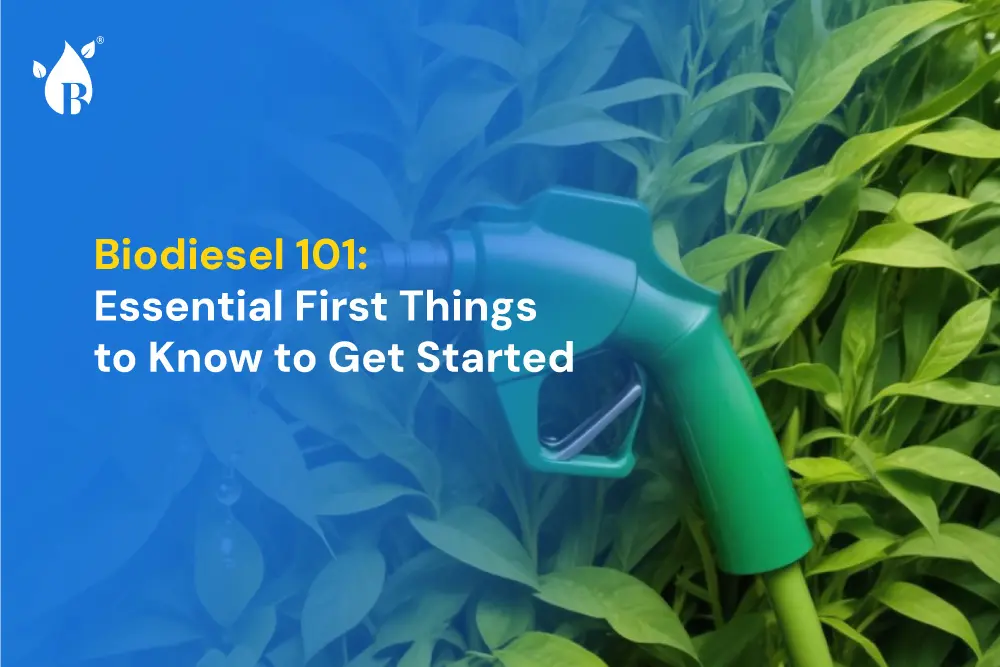The global biodiesel market is projected to reach $64.87 billion by 2027, growing at a CAGR of 8.4% from 2020 to 2027. This growth is driven by increasing demand for renewable energy and government incentives for biodiesel production. Setting up a biodiesel plant is an exciting venture that can contribute to sustainable energy solutions. Before you want to become a biodiesel manufacturer, it’s essential to lay a strong foundation to know all about it.
As the global focus shifts toward sustainable energy, biodiesel has emerged as a viable alternative to fossil fuels. Made from renewable resources such as vegetable oils and animal fats, biodiesel offers a cleaner and greener fuel option. Here’s a primer on biodiesel, its benefits, and how to get started, with a focus on India and major global countries.
Biodiesel is produced through the transesterification of fats and oils, creating fatty acid methyl esters (FAME) and glycerin. The FAME acts as biodiesel, which can be used in diesel engines with minimal modifications. This renewable fuel helps reduce reliance on petroleum-based diesel.
Global and Indian Context
1. Environmental Benefits: Biodiesel can significantly cut greenhouse gas emissions. According to the U.S. Environmental Protection Agency (EPA), biodiesel can reduce carbon dioxide emissions by up to 78% compared to petroleum diesel. In India, the Ministry of New and Renewable Energy (MNRE) supports biodiesel for its potential to reduce air pollution and dependence on imported fossil fuels.
2. India’s Biodiesel Industry: India is actively investing in biodiesel production. The Indian government has set a target to achieve 5% blending of biodiesel with diesel by 2030 under the National Biofuel Policy. The Indian Oil Corporation and other public sector undertakings are working on developing biodiesel from non-edible oils and waste cooking oils.
3. Global Adoption: Countries like the United States, Brazil, and Germany are leading in biodiesel use. Brazil, for example, has a mandatory biodiesel blend of B10 (10% biodiesel) and plans to increase it to B15. In Germany, biodiesel usage is well-integrated into the transport sector, with mandates for biodiesel blends and substantial investments in production facilities.
Getting Started with Biodiesel
1. Understanding Biodiesel Grades: Biodiesel is available in various blends, such as B20 (20% biodiesel, 80% diesel) and B100 (100% biodiesel). For most diesel engines, B20 is suitable without modifications. Higher blends, including B100, might require engine adjustments.
2. Checking Compatibility: Before switching to biodiesel, check your vehicle’s compatibility. Most modern diesel engines can handle B20. For higher blends or B100, it is imperative to check with your vehicle manufacturer or a mechanic.
3. Sourcing Biodiesel: In India, biodiesel is increasingly available at fuel stations and through dedicated suppliers. Organizations like the Indian Oil Corporation and the Biodiesel Association of India provide resources and directories for sourcing biodiesel.
4. Storage and Handling: Biodiesel should be stored in clean, dry conditions. It is more prone to oxidation and microbial contamination compared to petroleum diesel, so proper storage is crucial.
5. Regulatory Considerations: Follow local regulations for biodiesel use. In India, the MNRE oversees biodiesel production and blending standards.
Biodiesel is produced through the transesterification of fats and oils, creating fatty acid methyl esters (FAME) and glycerin. The FAME acts as biodiesel, which can be used in diesel engines with minimal modifications. This renewable fuel helps reduce reliance on petroleum-based diesel.




